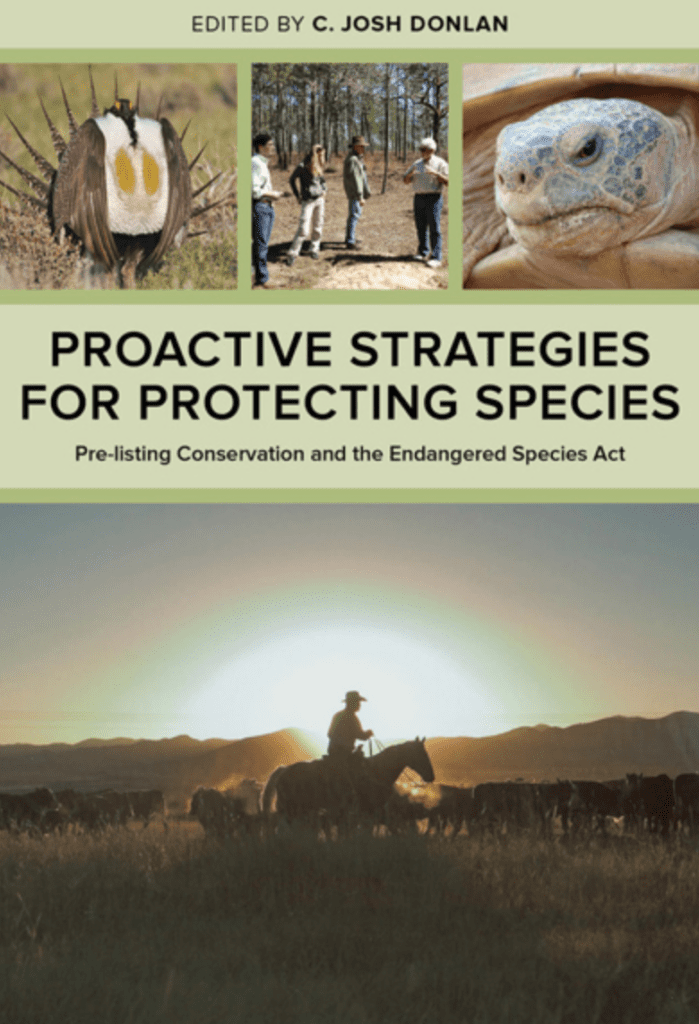Nearly forty years old, the US Endangered Species Act (ESA) remains a landmark act in conservation and one of the world’s most comprehensive laws designed to prevent species extinctions and support recovery efforts for imperiled species. A controversial law and often subject to political attack, the ESA is successful overall but not without difficulties. Those who enforce the ESA, for example, struggle to achieve viable recovery goals for many species.
ACS’s Josh Donlan published an edited volume on pre-listing conservation. Proactive Strategies for Protecting Species is forward-thinking, innovative volume that provides a roadmap for designing species conservation programs on the ground so they are effective and take place upstream of regulation, which will contribute to a reduction in lawsuits and other expenses that arise after a species is listed. It is a guidebook for anyone anywhere interested in designing programs that incentivize environmental stewardship and species conservation.
This volume brings together ecologists, foresters, social scientists, lawyers, ranchers, government officials, and others to create a legal, scientific, sociological, financial, and technological foundation for designing solutions that incentivize conservation action for hundreds of at-risk species—prior to their potential listing under the ESA. Proactive Strategies for Protecting Species explores the perspectives, opportunities, and challenges around designing and implementing pre-listing conservation programs and approaches to species conservation.
PRAISE FOR PROACTIVE STRATEGIES FOR SPECIES PROTECTION
As the authors note, obstacles to reform the ESA are myriad. However, if the substantial hurdles to creative and constructive regulation are alleviated, the work of Donlan et al. will be a fine addition to existing incentive structures. – Erica Fleishman in The Quarterly Review of Biology.
NOAA Senior Scientist Robin Waples reviews Proactive Strategies in the journal Bioscience, calling it a breath of fresh air. Read the review here.
This is the most useful and hopeful compilation of environmental writing I have come across in my career. I hope it will be a reference point for a major change in expectations and practices. – Jeremy Sokulsky, President, Environmental Incentives
For those who agree that the ‘cost’ of upstream conservation is far more preferable than waiting for the Endangered Species Act to sound the alarm of pending species endangerment, this primer provides an important and pragmatic guide, while promoting responsible stewardship of the incredible natural resources entrusted to our care. – Jamie Rappaport Clark, Executive Director at Defenders of Wildlife
This is the first book I have seen that makes a real attempt to suggest ways to outflank the Endangered Species Act so that species preservation actually happens. – Randy Simmons, Utah State University and coauthor of Wilderness and Political Ecology
There’s a big idea at the heart of this book – the kind of big idea that promises to transform how we conduct the business of species and habitat conservation. Everyone wins when the public and private sectors work together to sustain wildlife and natural resources through the use of proactive incentives instead of only relying on regulation. These types of approaches are at the foundation of environmental health, economic opportunity, and cross-sectorial cooperation. – Craig Hanson, Global Director of Food, Forests & Water at the World Resources Institute
